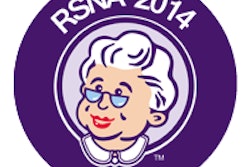While PET utilization increased overall among Medicare beneficiaries with non-small cell lung cancer (NSCLC) from 1998 through 2007, long-standing disparities in access to the technology actually worsened over the same time period, according to a study published online February 15 in Radiology.
Researchers from Duke University found that after PET won Medicare reimbursement in 1998, utilization grew to the point where the modality was used in 50% of NSCLC cases by 2005. But PET is used less often for patients who are older, black, or from less educated or more impoverished regions: Utilization rates for these groups were 10 percentage points lower at the end of the study period in 2007.
The study was led by Michaela Dinan, PhD, from Duke Clinical Research Institute in Durham, NC (Radiology, February 15, 2013).
Previous research
The Duke study offers similar results to 2012 research, which found greater utilization of PET imaging among white patients with higher income levels in areas of higher Medicare spending.
Although the use of PET increased among both black and white cancer patients from 2004 to 2008, the analysis showed that black Medicare beneficiaries had lower rates of PET utilization compared to whites, with the difference between the two groups widening during the time period (Journal of the American College of Radiology, September 2012, Vol. 9:9, pp. 635-642).
For the current study, Dinan and colleagues reviewed Surveillance, Epidemiology, and End Results (SEER) Medicare data from 12 SEER registries, which included all patients 66 years or older with confirmed NSCLC between 1998 and 2007.
The researchers identified 161,401 Medicare beneficiaries who received a diagnosis of one or more cases of cancer of the lung and bronchus. Among those patients, there were 163,379 separate diagnoses of lung cancer. The final cohort included 46,544 patients with 46,935 cases of NSCLC.
Patients were also categorized into early (1998-2000), middle (2001-2004), and late (2005-2007) PET adoption cohorts.
PET utilization
Baseline characteristics differed among the three cohorts, according to the authors.
In comparing the early cohort versus the late cohort, the early cohort included almost half as many patients older than 80 years (13% versus 22%), more patients without comorbid conditions (56% versus 48%), and fewer patients from predominantly black regions (15% versus 23%).
There was an increase in the number of patients who underwent at least one PET examination two months before through four months after diagnosis over the study time period. In the early cohort, 6% of patients received a PET scan during that time, compared with 42% in the middle cohort and 65% in the late cohort.
At least half of all patients were receiving PET by 2005, regardless of race, region, age, or local sociodemographic factors, illustrating the overall large increase in PET use. Still, patients who received a PET scan were more likely to be married, nonblack, younger than 80 years of age, and living in a region with higher education levels, or in the Northeast.
The number of patients undergoing multiple PET exams within the year after diagnosis also increased as PET's availability blossomed. By 2005-2007, of those who had one or more PET studies, 20% received two PET studies within a year and 12% had three or more.
Residing within 40 miles of a PET facility initially was a factor in whether or not patients received a PET scan, as those in the early and middle cohorts were forced to travel greater distances to the nearest PET facility.
The long-distance travelers were younger, more likely to be men, more likely to be married, had fewer comorbid conditions, and lived in regions with lower education levels and higher poverty rates. By 2007, however, travel was a no longer a factor in whether or not an NSCLC patient received a PET scan, as more imaging facilities offered PET.
The greatest variation in the use of PET before treatment was found in patients who underwent surgery (79%), compared with those who received chemotherapy or radiation (63%-73%) or no treatment at all (45%). Among patients who underwent surgery, both black patients (75%) and nonblack patients (79%) had frequent, similar use of PET before surgery.
Race factor
"The possibility that racial variation in receipt of PET may be associated with surgery is supported by previous studies of health disparities in NSCLC that have suggested that disparities in race and age were driven by access to surgery," Dinan and colleagues wrote.
They noted a study from Memorial Sloan-Kettering Cancer Center that concluded there was a lower survival rate among black patients with early-stage NSCLC compared to white patients, due primarily to a lower rate of surgical treatment among blacks (New England Journal of Medicine, October 14, 1999, Vol. 341:16, pp. 1198-1205).
In conclusion, Dinan and colleagues wrote that "demographic differences in rates of PET use among Medicare beneficiaries with NSCLC persisted or increased between 1998 and 2007." PET use among those with NSCLC differed based on education levels and geographic region.
"Providers should be mindful that PET is not uniformly administered to all patient populations," they wrote.




















